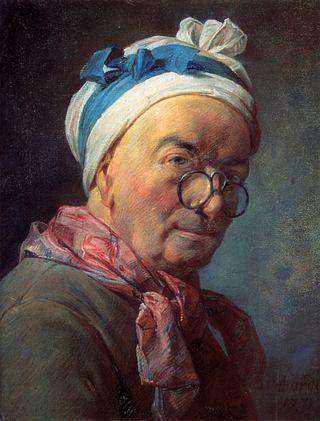
Jean Siméon Chardin was an 18th-century French painter. He is considered a master of still life, and is also noted for his genre paintings which depict kitchen maids, children, and domestic activities. Carefully balanced composition, soft diffusion of light, and granular impasto characterize his work.

Édouard Manet was a French modernist painter. He was one of the first 19th-century artists to paint modern life, as well as a pivotal figure in the transition from Realism to Impressionism.

Marc Quinn is a British contemporary visual artist whose work includes sculpture, installation, and painting. Quinn explores "what it is to be human in the world today" through subjects including the body, genetics, identity, environment, and the media. His work has used materials that vary widely, from blood, bread and flowers, to marble and stainless steel. Quinn has been the subject of solo exhibitions at Sir John Soane's Museum, the Tate Gallery, National Portrait Gallery, Fondation Beyeler, Fondazione Prada, and South London Gallery. The artist was a notable member of the Young British Artists movement.
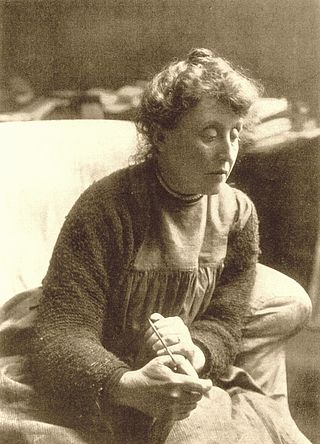
Evelyn De Morgan was an English painter associated early in her career with the later phase of the Pre-Raphaelite Movement, and working in a range of styles including Aestheticism and Symbolism. Her paintings are figural, foregrounding the female body through the use of spiritual, mythological, and allegorical themes. They rely on a range of metaphors to express what several scholars have identified as spiritualist and feminist content. Her later works also dealt with the themes of war from a pacifist perspective, engaging with conflicts such as the Second Boer War and World War I.
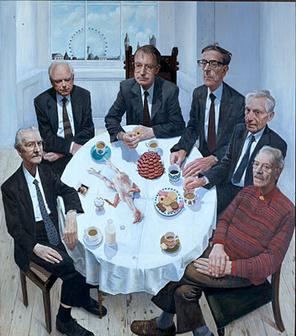
The BP Portrait Award was an annual portraiture competition held at the National Portrait Gallery in London, England. It is the successor to the John Player Portrait Award. It is the most important portrait prize in the world, and is reputedly one of the most prestigious competitions in contemporary art. Starting in 2024, the National Portrait Gallery’s portrait competition resumed under the new sponsorship of international law firm Herbert Smith Freehills.

Richard Ansdell was a British painter of animals and genre scenes.
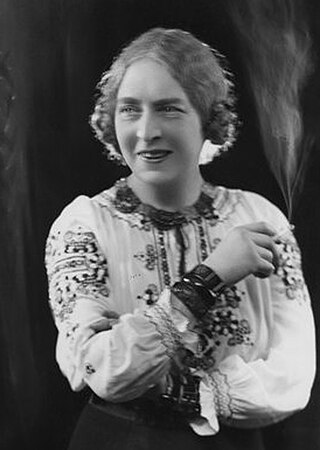
Dame Laura Knight was an English artist who worked in oils, watercolours, etching, engraving and drypoint. Knight was a painter in the figurative, realist tradition, who embraced English Impressionism. In her long career, Knight was among the most successful and popular painters in Britain. Her success in the male-dominated British art establishment paved the way for greater status and recognition for women artists.

Stirling Smith Art Gallery and Museum, formerly The Smith Institute, is an art and local history museum in Stirling, Scotland. The museum was founded in 1874 at the bequest of artist Thomas Stuart Smith.
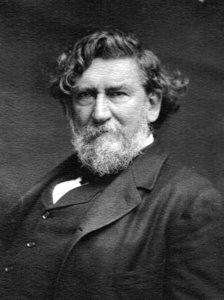
Thomas Satterwhite Noble was an American painter as well as the first head of the McMicken School of Design in Cincinnati, Ohio.
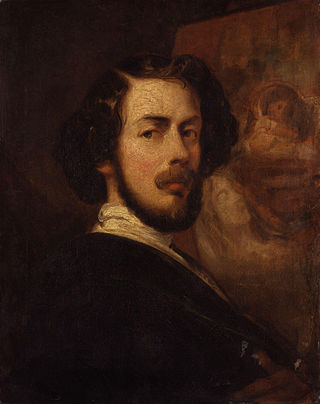
Thomas Jones Barker was an English historical, military, and portrait painter.

The Horse Fair is an oil-on-canvas painting by French artist Rosa Bonheur, begun in 1852 and first exhibited at the Paris Salon in 1853. The artist added some finishing touches in 1855. The large work measures 96.25 in × 199.5 in.
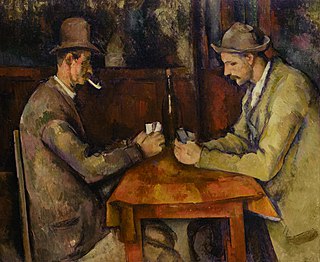
The Card Players is a series of oil paintings by the French Post-Impressionist artist Paul Cézanne. Painted during Cézanne's final period in the early 1890s, there are five paintings in the series. The versions vary in size, the number of players, and the setting in which the game takes place. Cézanne also completed numerous drawings and studies in preparation for The Card Players series.

Betsy Graves Reyneau (1888–1964) was an American painter, best known for a series of paintings of prominent African Americans for the exhibition “Portraits of Outstanding Americans of Negro Origin” that, with those by Laura Wheeler Waring and under the Harmon Foundation, toured the United States from 1944 to 1954. A granddaughter of Michigan Supreme Court Justice Benjamin F. Graves, Reyneau's sitters included Mary McLeod Bethune, George Washington Carver, Joe Louis, and Thurgood Marshall. Reyneau's portrait of Carver, the most famous, was the first of an African American to enter a national American collection.

James Ramsay (1789–1854) was a British portrait painter, working in oils.
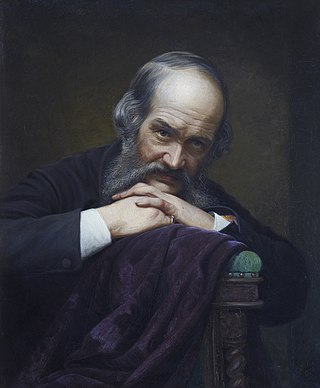
Thomas Stuart Smith (1815–1869) was a Scottish painter and philanthropist known for creating what is now called the Stirling Smith Museum and Art Gallery, located in Stirling, Scotland.

Man with a Pipe, also referred to as Portrait of an American Smoker, Portrait of an American Smoking, American Smoking and American Man, is a painting by the French Cubist artist Jean Metzinger. The work was reproduced on the cover of catalogue of the Exhibition of Cubist and Futurist Pictures, Boggs & Buhl Department Store, Pittsburgh, forming part of a show in 1913 that traveled to several U.S. cities: Milwaukee, Cleveland, Pittsburgh, New York, and Philadelphia.
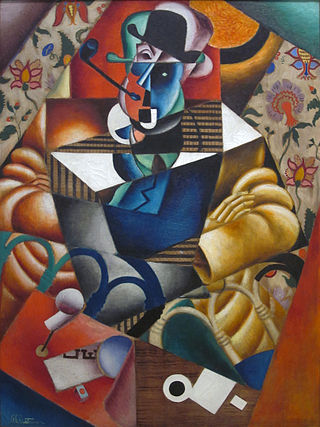
Man with Pipe is a Cubist painting by the French artist Jean Metzinger. It has been suggested that the sitter depicted in the painting represents either Guillaume Apollinaire or Max Jacob. The work was exhibited in the spring of 1914 at the Salon des Indépendants, Paris, Champ-de-Mars, March 1–April 30, 1914, no. 2289, Room 11. A photograph of Le Fumeur was published in Le Petit Comtois, 13 March 1914, for the occasion of the exhibition. In July 1914 the painting was exhibited in Berlin at Herwarth Walden’s Galerie Der Sturm, with works by Albert Gleizes, Raymond Duchamp-Villon and Jacques Villon.
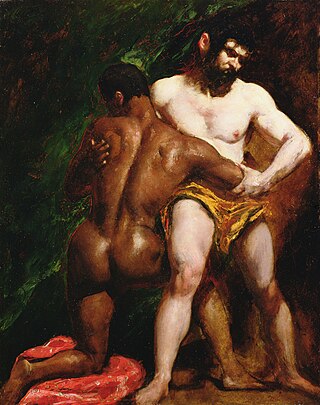
The Wrestlers is an oil painting on millboard by English artist William Etty, painted around 1840 and currently in the York Art Gallery, in York, England. It depicts a wrestling match between a black man and a white man, both glistening with sweat and under an intense light emphasising their curves and musculature. While little documentation of the painting exists prior to 1947, it is likely that it was painted over a period of three evenings at the life class of the Royal Academy.

Preparing for a Fancy Dress Ball, also known as The Misses Williams-Wynn, is a 173 by 150 cm oil on canvas by English artist William Etty, first exhibited in 1835 and currently in the York Art Gallery. Although Etty was then known almost exclusively for history paintings featuring nude figures, he was commissioned in 1833 by Welsh Conservative politician Charles Watkin Williams-Wynn to paint a portrait of two of his daughters. Preparing for a Fancy Dress Ball shows Williams-Wynn's daughters, Charlotte and Mary, in lavish Italian-style costume: Charlotte, the eldest, is shown standing, helping the seated Mary decorate her hair with a ribbon and a rose. Etty put a good deal of effort into the piece and took much longer than usual to finish it.

Samuel Joseph Brown Jr. (1907–1994) was a watercolorist, printmaker, and educator. He was the first African American artist hired to produce work for the Public Works of Art Project, a precursor to the Work Progress Administration's Federal Art Project. Brown often depicted the lives of African Americans in his paintings. He worked primarily in watercolor and oils, and he produced portraits, landscapes and prints.



















